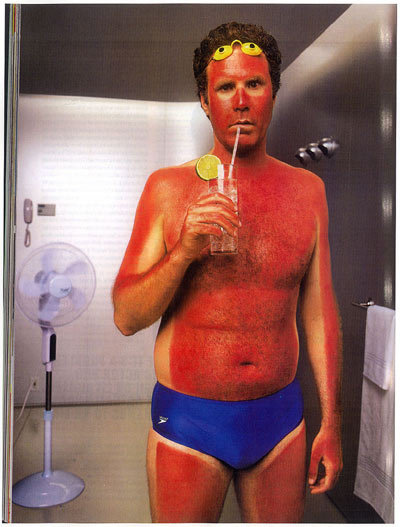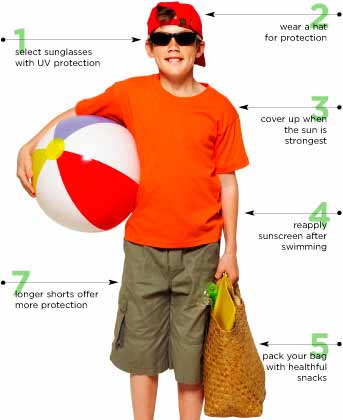Avoiding excessive sun exposure can not only prevent serious heat-related illness such as sun stroke and heat exhaustion, it can also prevent sun damage and burns. Remember to:
– Schedule outdoor physical activities for when UV rays are at their weakest — before 10 a.m. and after 4 p.m.
– Generously apply a broad-spectrum sunscreen that protects against both UVA and UVB rays with a sun protection factor (SPF) of at least 30 to all exposed skin.
– Wear UVA/UVB protective sunglasses to prevent eye damage.
– Protect yourself even in cloudy or overcast weather as the sun’s rays can penetrate clouds.
– Drink plenty of fluids and avoid drinks that can lead to dehydration, such as alcohol and coffee
In order to avoid these burns:
Kim Kardashian – Bad Tan
From Wikipedia:
A sunburn is a burn to living tissue, such as skin, which is produced by overexposure to ultraviolet (UV) radiation, commonly from the sun‘s rays. Usual mild symptoms in humans and animals include red or reddish skin that is hot to the touch, general fatigue, and mild dizziness. An excess of UV radiation can be life-threatening in extreme cases. Exposure of the skin to lesser amounts of UV radiation will often produce a suntan.
Excessive UV radiation is the leading cause of primarily non-malignant skin tumors.[1][2] Sunscreen is widely agreed to prevent sunburn, although some scientists argue that it may not effectively protect against malignant melanoma, which is either caused by a different part of the ultraviolet spectrum or is not caused by sun exposure at all.[3][4] Clothing, including hats, is considered the preferred skin protection method. Moderate sun tanning without burning can also prevent subsequent sunburn, as it increases the amount of melanin, a skin photoprotectant pigment that is the skin’s natural defense against overexposure. Importantly, both sunburn and the increase in melanin production are triggered by direct DNA damage. When the skin cells’ DNA is damaged by UV radiation, type I cell-death is triggered and the skin is replaced.[5] Malignant melanoma may occur as a result of indirect DNA damage if the damage is not properly repaired. Proper repair occurs in the majority of DNA damage, and as a result not every exposure to UV results in cancer. The only cure for sunburn is slow healing, although some skin creams can help with the symptoms.




